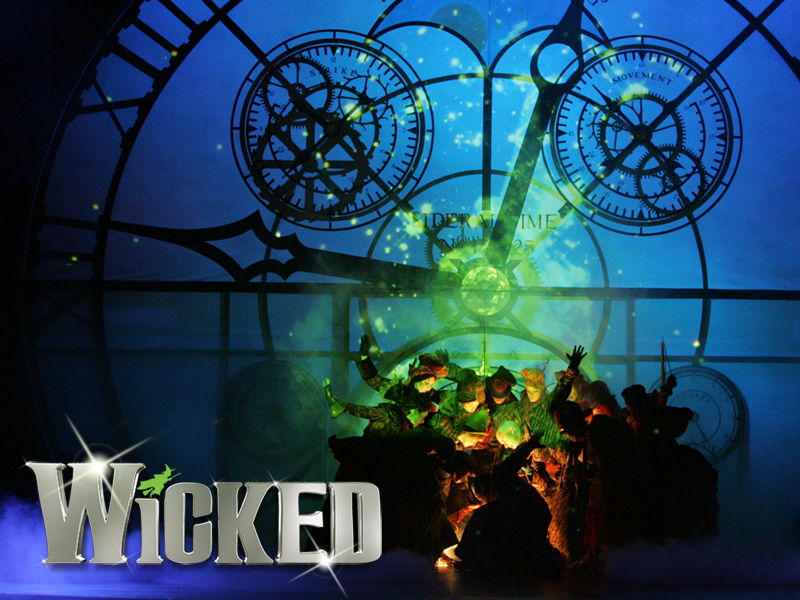Think of examples of "Deus ex machina"
"Deus ex machina" or, "god from the machine" occurs all throughout history and even appears in the modern age, both in fiction and, in a way, in reality. Throughout the history of storytelling, there have been instances in which seemingly unsolvable plot conflicts were solved by unexpected and often outrageous means. A few famous examples include Moses' parting of the Red Sea, Frodo and Sam's salvation by the eagles in The Lord of the Rings, and Dorthy's "there's no place like home" moment in
The Wizard of Oz. In each instance, the story had come to a halt and the author solved the problem in an impractical manner. Even in modern times, writers and artists alike have employed the use of Deus ex machina to resolve conflict and complete the story. For example, in almost any hollywood blockbuster, such as a Marvel film or a book adaptation, everything will go wrong for the main actor and all hope will be lost but by some miracle, they will be triumphant. This happens in such films as X-Men: Days of Future Past, in which the mutant resistance is almost completely destroyed and suddenly they are warped to an alternate timeline, and Game of Thrones, of which any example I give will surely be a spoiler. I think the use of Deus ex machina can either be clever or unimaginative. Good writers will never use it haphazardly, as it shows they were written into a corner and created an excuse to end the story, instead, it should be used originally and with enough wit to justify the absurdity of it.
Are we in the neo-Baroque or Neo-Rococo era? Why?
I find this to be a difficult question to answer because the times are always changing and its almost impossible that we will ever revisit an era, at least not exactly. Instead, I believe each new period borrows from its predecessors and builds atop it. That being said, I believe it would be safe to say we are experiencing a blend of neo-Baroque and neo-Rococo, as well as numerous other influences. Its not hard to see that we are living in extravagant times. Some of the most obvious evidence of this can be found in the commercials constantly streaming on TV. Throughout the year, we're bombarded with these advertisements that feature jaw dropping effects and content. It seems every company is now competing for our attention, and trying to one up each other in the process. This is especially common for car, liquor, fashion and technology advertisements. I think this is also pretty evident in the music industry. Like the examples we watched in class, artists today are using every resource possible to create lavish and over the top music videos, concerts, and publicity. Lady Gaga, Katy Perry, Nikki Minaj, and Miley Cyrus are amongst the most frivolous. Overall, I think its difficult to say definitively that either of these terms would fit our time. Though there are a lot of things going on that would qualify as neo-baroque/rococo, there's just too vast of a popular culture for it to be the dominant culture.
Discuss the concept of "Bread and Circus"
After just a few sentences into research on the term "Bread and circus(es)", I was immediately reminded of the Hunger Games, in which a spectacle is put on to distract the people from the evils hiding in the government. For a while, this kept the rich content and the poor obedient by simply drawing their attention towards pageantry and competition. With a little more research, I began to understand this concept as something much more subtle and despicable. Since the beginning of society, those in power have had to maintain it and carry out their intentions. As challenges presented themselves, some have had to turn to immoral means, such as bread and circus. The colosseum games in Rome and the performances of the Globe Theatre are two prime examples.
Terrifyingly enough, the use of "bread and circus" for organizations and individuals to achieve their means has not only persisted into today, but some might argue it has become even more prominent. We live in such a media-saturated world that we are constantly flooded with distractions and who's to say its not intentional. The government, whether officially or not, has power with the media and can use that power to manipulate it and consequentially, us. Quite recently, the world exploded in a series of serious tragedies around the world. In a matter of weeks, the Middle East erupted once again in chaos, there was a domestic battle in Ferguson, Missouri, and disorder struck in the Ukraine. In light of all of these tragedies, the media drew people's attention to more harmless things, such as the ALS ice bucket challenge or the Ebola scare. Though it would likely be called a conspiracy to suggest such connections, I think its important to note that the majority of people in this world can easily be distracted from serious issues, especially because of social networking and the internet.




